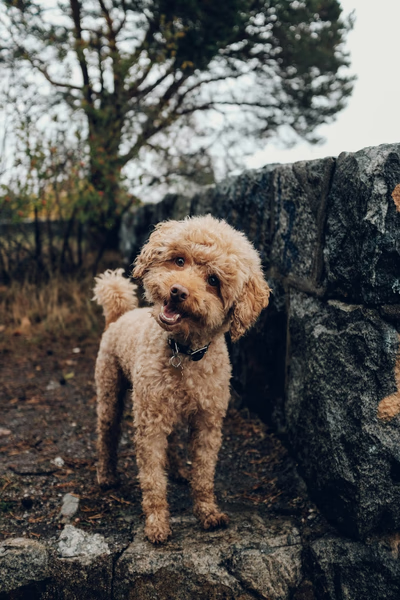Why Does My Dog Change Sleeping Spots?
Why Does My Dog Change Sleeping Spots?
It’s common to notice that our furry friends don’t settle for just one place to rest. One day you might find your dog curled up in their bed, and the next day discover them on the sofa or in the coolest corner of the house. This behavior can puzzle pet owners, but understanding the reasons behind it can help us create a more comfortable and healthy environment for them. Here we explore some of the most common reasons your dog may change sleeping spots.

Very important
Never wake your dog abruptly when they are in deep sleep. This can frighten them and provoke a defensive reaction even in the most docile dogs.
1. The Search for Comfort
1.1. Instinctive Behavior
Dogs, like their wild ancestors, have a natural instinct to look for safe, comfortable places to sleep. In the wild, they need to stay alert for potential predators, so they choose strategic spots. By changing places, your dog may be seeking the spot that offers the most comfort and security.
1.2. Comparing Them to Humans
Just like us, dogs have their own preferences and specific needs. A place may feel comfortable at one moment, but conditions—such as temperature or noise level—can change. It’s normal for them to look for different spaces that match their mood and physical needs.
2. Environmental Factors
2.1. Temperature and Comfort
Temperature is one of the most influential factors when choosing where to sleep. If one area of the house is too hot or too cold, your dog will look for a place with a more pleasant temperature. They might prefer a cool spot in summer and a warm one in winter.
2.2. Bed Location
Where your dog’s bed is placed can also affect their decision to move. If their bed is in a very busy or noisy area, they might look for a quieter corner where they can rest without interruptions. Consider moving their bed to a more comfortable, welcoming location.
3. Stress and Boredom
3.1. Signs of Stress in Dogs
Changing sleeping spots can also indicate stress. If your dog feels anxious or uncomfortable, they may try to find a place where they feel safer. Some signs of stress include:
- Excessive barking
- Destructive behavior
- Increased licking
3.2. The Importance of Mental and Physical Stimulation
Dogs need plenty of exercise and mental stimulation to stay happy and healthy. If they feel bored, they may seek new areas to explore and rest. Be sure to include walks, games, and activities that keep your dog entertained.
4. Need for Security
4.1. Protective Behavior
Dogs are pack animals and seek closeness to their loved ones. Changing sleeping spots can be a way to stay near their human family. They might also choose strategic locations that allow them to observe their surroundings, ensuring everything is in order.
4.2. Influence of the Family Environment
The family atmosphere and household dynamics also play a role in choosing resting spots. Changes in routine, the arrival of new family members, or even rearranging furniture can prompt your dog to find new spaces that provide a sense of security.
5. Consequences of Poor Sleep
5.1. Impact on Physical Health
Lack of quality sleep can lead to health issues in dogs, such as obesity, weakened immune system, and skin problems. Poor rest can affect their energy and vitality, making your pet feel more fatigued and less active.
5.2. Effects on Behavior
In addition to physical health problems, inadequate sleep can influence your dog’s behavior. A dog that doesn’t rest properly may become irritable, anxious, and more prone to developing behavioral problems. This affects not only their quality of life but also your relationship with them.
6. What Should I Do If My Dog Changes Sleeping Spots?
6.1. Improve the Sleeping Environment
If you notice your dog frequently changes places, consider improving their sleeping environment. Here are some suggestions:
-
Provide a comfortable bed: Ensure the bed is appropriate for your dog’s size and needs. Orthopedic beds can be beneficial for older dogs.
-
Choose the right location: Place the bed in a quiet area away from noise. Find a spot where your dog can feel safe and comfortable.
-
Keep the area clean: A clean space free of allergens will help your dog feel more at ease.
6.2. Establish an Exercise Routine
Increase your dog’s physical activity through regular walks and playtime. This not only helps reduce stress but also promotes more restorative sleep. Consider activities such as:
- Daily walks
- Fetch games
- Obedience training
Conclusion
Changes in where your dog sleeps can be linked to various reasons, from seeking comfort to experiencing stress. Paying attention to these factors and adjusting their environment can improve your pet’s quality of life, ensuring they have a safe and comfortable place to rest. At the end of the day, the most important thing is that your dog is happy and healthy, enjoying a good night’s sleep.


